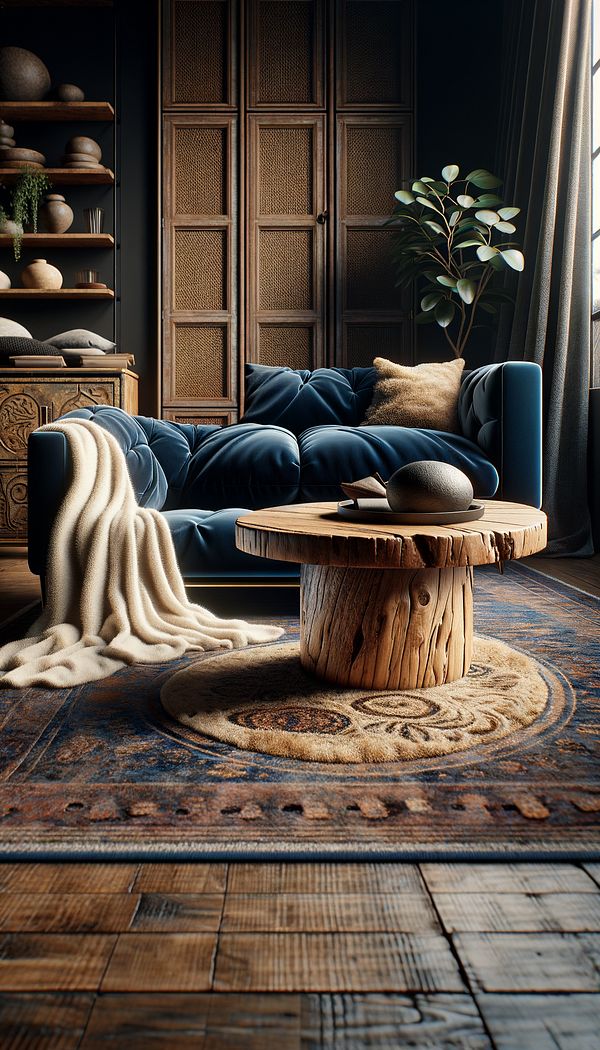What is Tactility?
Tactility refers to the sensation and quality of touch in materials, textures, and objects within an interior space.
Description
Tactility, in the context of interior design, plays a crucial role in how we experience and interact with our surroundings. This term encompasses the tactile qualities of materials and objects, such as their smoothness, roughness, softness, or any other sensory attributes that can be perceived through touch. The importance of tactility lies in its ability to add depth, interest, and comfort to a space, making it more inviting and engaging for the occupants.
Tactility can be applied through a wide range of materials and textures, from soft furnishings like cushions, rugs, and upholstery to architectural elements such as wall treatments and flooring. The choice of materials and their tactical qualities can significantly influence the mood and atmosphere of a room. Designers often use tactility to evoke specific emotions or to reinforce the design concept of a space.
Moreover, the concept of tactility goes beyond just the physical sensation of touch. It can also relate to visual texture and the perception of warmth or coolness of materials. For example, a visually textured wall might not be "touchable" in the traditional sense but can still contribute to the tactile experience of a space by suggesting a feel or touch.
Achieving a harmonious balance of tactility within a space requires thoughtful consideration of the sensory experience. This involves not only the selection of materials but also the interplay between different textures and how they complement each other. The ultimate goal is to create an environment that is not only aesthetically pleasing but also tactilely enriching, offering a well-rounded sensory experience.
Usage
A designer may incorporate a variety of textures into a living room by using a velvet sofa, a knitted throw, a sisal rug, and smooth leather armchairs. This combination of different tactile qualities can make the space feel more dynamic and comfortable. In a bathroom, combining smooth, cool marble countertops with warm, textured wooden cabinets can offer a contrasting tactile experience that enhances the overall design.
FAQs
-
How important is tactility in interior design?
Tactility is highly important in interior design as it influences how individuals physically and emotionally interact with a space. It can enhance the comfort, mood, and usability of an environment.
-
Can tactility affect the perception of room temperature?
Yes, the tactile qualities of materials can influence the perceived temperature of a room. For example, warm, soft textures may make a room feel cozier, while cool, smooth surfaces can give a sense of coolness.
-
Is tactility only important for furniture and fabrics?
No, tactility applies to all aspects of interior design, including architectural elements, decorative objects, and even lighting fixtures. Any component that contributes to the overall sensory experience of a space is relevant.
Practical Application
When aiming to enhance the tactility of a space, consider incorporating a variety of materials and textures. Start with larger furniture pieces and then layer in smaller items and textiles. Pay attention to how these elements interact visually and physically, ensuring they create a cohesive and inviting environment. Also, consider the function of the space and the everyday usage of each element to optimize both comfort and durability.
-
Furniture Types599 articles
-
Decorative Techniques322 articles
-
Decorating Principles & Elements330 articles
-
Materials & Textiles360 articles
-
Lazy SusanA rotating tray placed on a table or countertop to aid in distributing food.
-
Lay OffLay off is the process of applying a final, very thin coat of paint or varnish in a specific manner to ensure a smooth finish.
-
Pencil PleatA type of curtain heading known for its tightly gathered folds.
-
Italian FinishingItalian Finishing refers to a high-quality, meticulous approach to surface finishing in interiors, known for its attention to detail and use of luxurious materials.
-
HassockA hassock is a thick, firm cushion used as a footstool or for kneeling.
